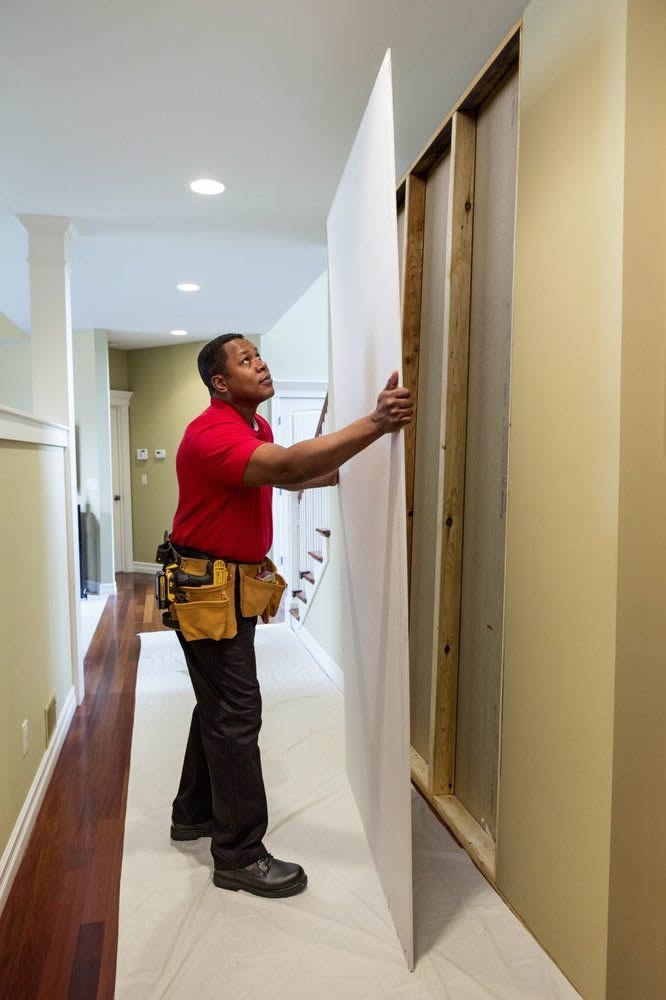Call This Tuesday to Get $35 OFF
Hire a Local Handyman Today
Call This Tuesday
to Get $35 Off.
Call This Tuesday to Get $35 OFF
Hire a Local Handyman Today
Call This Tuesday
to Get $35 Off.
Affordable, durable, easy to repair, and versatile enough to work in any home or business, drywall is one of the most practical building materials ever invented. However, drywall is not without fault. It’s durable, but it’s not indestructible. It’s easy to repair, but it’s also easy to damage.

From door dings to moisture issues, there’s a lot that can go wrong with drywall – and it’ll show. If you’ve noticed cracks, dents, or even sagging areas in your drywall, then you’re not alone. These a lot more common than we’d like.
In fact, let’s take a closer look. In this brief article brought to you by Mr. Handyman, we look at five of the most common drywall problems, what causes them, and what can be done to fix them. If you’d rather hire a uniformed and trained handyman in Seagonville, then contact Mr. Handyman to get in touch today.
Perhaps the most common drywall issue, cracks typically show up near joints, corners, or ceilings. This is not by chance; these cracks can result from natural settling, temperature fluctuations, or even small foundation shifts. New homes are especially likely to exhibit this problem as the house adjusts to its foundation.
The good news is that small cracks can sometimes be repaired with a bit of joint compound and a drywall knife. The key is to smooth and feather the edges so the repair blends with the surrounding surface.
If cracks reappear after you’ve patched them, or they run across multiple walls or ceilings, then you’ve got a deeper problem that demands a professional inspection.
Let’s face it: It doesn’t take much to dent drywall. A doorknob, a chair, or even a playful pet can leave an impression on drywall. Over time, these small blemishes can make your walls look tired and unkempt. Let’s not even get into the larger holes like from removing wall-mounted items such as TVs, mirrors, or shelves.
Small dents are easy enough to fill with spackling paste and paint over. For medium holes, you’ll need to use a mesh patch and joint compound to rebuild the surface. Larger holes that break through the insulation require even more work and expertise.
Drywall does NOT like water. It’s in the name: DRYwall. Whether from a roof leak, a burst pipe, or even high humidity, moisture can cause the paper facing to bubble, discolor, and eventually crumble. Plus, wet drywall can nurture mold growth.
Most important is getting to the root of the moisture and fixing it (whether that’s bad drainage, leaking plumbing, etc.). Once that’s handled, any affected drywall should be cut out and replaced. Simply painting over mold-infested drywall is NOT a solution.
Proper drywall repair involves replacing the soaked section, re-taping the seams, and finishing it to blend perfectly with the rest of the wall. It’s not a place to cut corners, and it’s something that professional handymen handle in a fraction of the time it takes DIYers.
Drywall is typically nailed onto the wooden studs, but those studs expand and contract as temperature and humidity fluctuates. Eventually, nails push slightly out of the service. That’s when you might notice tiny circles or bumps on your drywall.
This is something you overlook until you see it… then you can’t unsee it. Simply hammering the nail back in won’t solve the problem. The right way is to remove the popped fastener, secure a new screw nearby to hold the drywall tight, and then patch and paint the area.
Drywall tape is what hides seams and gives walls that smooth and continuous look. If applied incorrectly or if the tape is exposed to moisture, then you might notice the tape bubble, peel, or crack away. This looks bad AND leaves the surface vulnerable to further damage.
Unfortunately, tape problems can’t just be glued back down. This is why it’s always advisable to leave installations and replacements to trained and experienced handymen. Pros like Mr. Handyman get the job done right the first time around – and back the workmanship with a 1-year guarantee!
Tile flooring comes in many shapes, sizes, and colors, and they're affordable, low maintenance, and offer great water resilience – ideal…
Read MoreThe siding on homes and commercial buildings are not just aesthetic; they serve multiple purposes. Siding is responsible for blocking wind-driven…
Read MoreStand at the curb lining your property and look at your home – not the quick glance you give it every…
Read MoreYour mailbox might seem like a small detail, but it's one of the first things people notice about your home. It's…
Read More